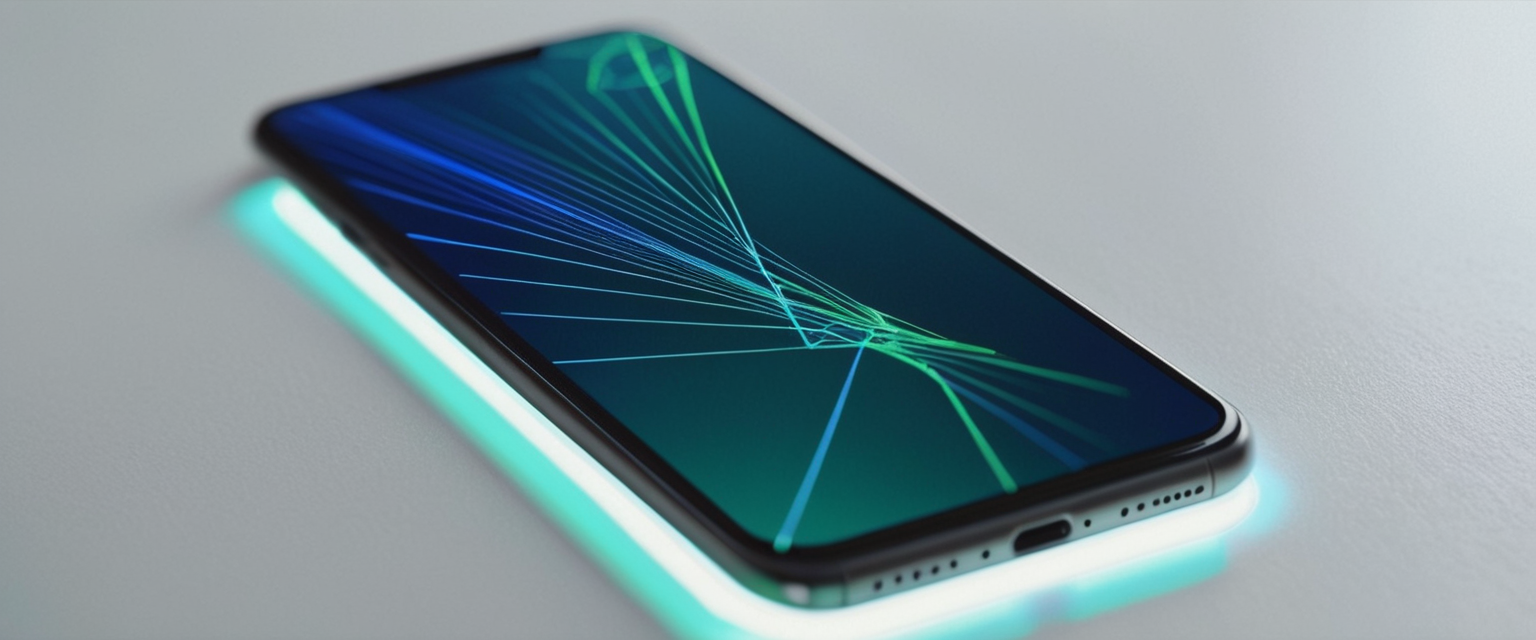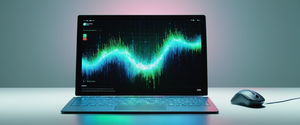
Mobile devices have become central repositories for sensitive personal information, financial data, and private communications, making them attractive targets for cybercriminals. Understanding how to check a phone for malware has become an essential skill for device users in an increasingly interconnected digital landscape. This report provides a comprehensive examination of malware detection methodologies, available tools, platform-specific approaches, and practical procedures that individuals can employ to protect their mobile devices from malicious software threats.
Understanding Mobile Malware and the Threat Landscape
Definitions and Distinctions
Malware is broadly defined as any software designed to damage, compromise, or gain unauthorized access to a device or network. The term encompasses a wide spectrum of malicious programs, and understanding the distinction between malware and viruses is crucial for effective detection and removal. Viruses are specific types of malware that operate by inserting themselves into legitimate applications and executing when those applications are run. In contrast, malware is a broader category that includes not only viruses but also spyware, adware, ransomware, Trojans, worms, rootkits, and other malicious code variants.
The confusion between these terms often leads users to employ ineffective detection strategies. While traditional computer viruses self-replicate by infecting files and corrupting data, mobile operating systems are architecturally designed to make true viral replication difficult. However, mobile devices face distinct malware threats that exploit their unique characteristics, including always-on connectivity, access to sensitive sensors, and personal information repositories. Malware on mobile devices can steal personal information, lock access to files until a ransom is paid, use the device to send spam, or download additional malicious software without the user’s consent.
The Rising Threat of Mobile Malware
The threat landscape for mobile devices has expanded dramatically in recent years. Attacks targeting mobile devices have risen 50 percent since last year, and mobile malware threats are as diverse as those targeting desktop computers, including Trojans, ransomware, advertising click fraud, and more. These attacks are distributed through phishing, malicious downloads, and are particularly problematic for jailbroken or rooted phones, which lack the default protections inherent in stock operating systems.
The evolution of mobile malware has created a complex detection environment. Advanced malware employs evasion techniques designed to fool users, security administrators, and antimalware products alike. Some malware uses polymorphic approaches that repeatedly change their underlying code to avoid detection, anti-sandbox techniques that delay execution until after analysis environments are exited, and fileless approaches that reside only in system RAM to avoid discovery. Understanding these technical nuances helps explain why simple scanning approaches may be insufficient for comprehensive malware detection.
Recognizing Signs of Mobile Malware Infection
Device Performance Indicators
One of the most common and recognizable signs of malware infection is a significant decrease in device performance. When malicious software runs in the background, it consumes valuable processing power and memory resources, causing noticeable slowdowns in normal device operations. Users may observe that apps take longer to launch, the device becomes sluggish during routine tasks, or the system freezes or crashes unexpectedly. It’s important to note that while smartphones naturally slow down over time due to accumulated data and app complexity, a sudden and significant performance degradation suggests possible malware activity rather than normal wear.
Battery drain is another critical indicator of potential malware infection. Malware programs operate continuously in the background, even when the device is idle, consuming significant power to run malicious processes and communicate with remote servers. If your phone’s battery life abruptly declines despite unchanged usage patterns, this could signal an active malware infection. Users should check battery health in their device settings to distinguish between battery degradation from normal wear and accelerated drain caused by malicious software.
Unexpected storage consumption represents another warning sign that demands investigation. Malware can occupy substantial device storage as it installs new files, creates temporary data, or duplicates existing files. Users may notice that their available storage space decreases rapidly without corresponding uploads of photos, videos, or other media. Examining storage usage through device settings can help identify suspicious apps consuming disproportionate space.
Network and Communication Anomalies
Unusual data usage patterns often indicate malware activity. Malware frequently communicates with remote command-and-control servers, downloads additional malicious software, or adds the device to botnets—all activities consuming significant data. Users who notice sudden spikes in their data consumption, unexplained increases in their mobile bills, or apps using unusually high amounts of data should investigate further. Checking data usage statistics in device settings can help identify which applications consume the most resources and pinpoint suspicious activity.
Suspicious messages sent to contacts represent a particularly alarming sign of compromise. If friends, family, or colleagues receive strange messages, emails, or social media messages purportedly from your account that you did not send, this indicates a malware infection that has accessed your contact list and messaging capabilities. Worms and certain types of Trojans are specifically designed to exploit contact lists for spreading themselves to other devices, making these notifications critical red flags that warrant immediate action.
Unwanted Pop-ups and Browser Anomalies
Aggressive pop-up advertising is one of the most visible signs of adware infection. While occasional pop-ups are normal during web browsing, persistent, unwanted advertisements appearing on the lock screen, in apps where they normally wouldn’t appear, or outside of web browsers suggest adware has been installed on the device. Some aggressive adware can even trigger video and audio advertisements while the phone is asleep, displaying notifications and alerts that interfere with normal device operation.
Browser hijacking and redirection indicate potential malware compromise. If your web browsing seems out of your control with unexpected redirects to unfamiliar pages or advertisements, if your homepage or search engine settings change without your permission, or if unwanted Chrome extensions or toolbars keep reappearing after removal, these are strong indicators of browser-targeting malware. Some malware specifically modifies browser settings to inject advertisements or redirect searches to malicious websites, compromising both user privacy and device security.
Account and Authentication Anomalies
Unexpected verification codes arriving via SMS or email can indicate that attackers are attempting to access your online accounts through a technique called spoofing. If you begin receiving SMS or email verification codes for accounts you didn’t attempt to access, this suggests someone is trying to compromise your accounts, potentially using your phone number or email address as entry points.
Suspicious account activity and unexpected lockouts are significant warning signs. If you find yourself locked out of important accounts unexpectedly, observe odd activity such as password reset requests you didn’t make, or see new social media posts or account changes you don’t remember making, your device or accounts may be compromised. These indicators suggest that malware may have captured your credentials or that an attacker has gained account access through a compromised device.
Physical and Thermal Indicators
Device overheating can indicate malware activity, though users must distinguish between normal heat from heavy use and suspicious overheating during light usage. While phones naturally generate heat during intensive tasks like gaming or video streaming, if your device becomes hot to the touch during normal use or idle periods, this suggests background processes—possibly malware—are straining the device’s resources.
Platform-Specific Detection Approaches: Android Devices
Understanding Android’s Security Architecture
Android’s open-source architecture creates both advantages and vulnerabilities for malware detection. Unlike Apple’s iOS, which restricts app installation to the official App Store and employs mandatory code signing, Android allows users to download applications from multiple sources. While this flexibility provides customization opportunities, it also creates infection vectors that complicate detection. Users who install applications from third-party app stores, engage in sideloading (downloading apps directly from developers), or jailbreak their devices significantly increase their malware risk.
The Android malware threat landscape is particularly acute because the operating system is open-source, meaning any developer can access the code and create applications with malicious intent. Additionally, the fragmented Android ecosystem—with many different device manufacturers and carriers each responsible for releasing software updates—results in many devices running outdated or unpatched versions of Android, creating persistent vulnerabilities that attackers can exploit.
Google Play Protect: The Built-in Detection System
Google Play Protect is Android’s primary built-in malware defense system, and understanding how to properly utilize it is essential for effective device security. This integrated security service runs continuous scanning of applications to identify potentially harmful software. Play Protect performs safety checks on apps from the Google Play Store before download and continuously scans installed applications for potentially harmful behavior. The system has shown significant improvement in recent years, with detection rates reaching over 99 percent effectiveness.
To activate and verify Google Play Protect is functioning properly, users should open the Google Play Store app, tap the profile icon in the top right corner, select “Play Protect Settings,” and ensure that “Scan apps with Play Protect” is toggled on. For users who have downloaded applications from sources outside the Google Play Store, an additional setting—”Improve harmful app detection”—should be enabled to provide enhanced protection against apps obtained through unofficial channels.
Google Play Protect operates through multiple mechanisms to detect malware. It analyzes apps during installation, monitors their behavior during execution, and performs regular scans of devices even after installation is complete. The system can automatically deactivate or remove harmful apps from devices and provides privacy alerts when applications request permissions or access sensitive data in ways that violate Google’s developer policies. Additionally, Play Protect automatically resets app permissions for applications that haven’t been used for three months, providing an extra layer of protection for infrequently used apps.
Manual Scanning Procedures for Android
For users seeking to manually verify their Android device’s security status, several systematic procedures can identify potentially malicious applications. The first critical step involves accessing the device’s security settings to run a device scan. Users should open their device’s Settings app, navigate to “Security & privacy” or “Battery and Device Care” (naming varies by manufacturer), and select “Scan device” or an equivalent option. This scan examines all apps and data on the device, comparing them against known malware signatures and analyzing suspicious behavioral patterns.
Beyond built-in scanning, users can manually examine their installed applications. By navigating to Settings, selecting Apps or Apps & Notifications, and reviewing the complete list of installed applications, users can identify programs they don’t recognize or remember installing. Any unfamiliar applications should be immediately uninstalled. This manual review is particularly important because sophisticated malware sometimes disguises itself as legitimate-looking system apps or tools, making signature-based detection insufficient.
Examining device storage is another manual detection approach. Users should check Settings > Storage or Device Storage to identify whether storage space is being consumed unexpectedly. Malware often creates numerous files on devices, consuming storage space in the process. A sudden, unexplained storage deficit despite minimal user data accumulation suggests possible malware activity.
Entering Safe Mode for Enhanced Detection
Restarting an Android device in safe mode provides an advanced detection technique that isolates third-party applications from the operating system. In safe mode, only pre-installed system apps function, and all third-party applications are disabled. This restriction allows users to determine whether performance issues or suspicious behavior persists when third-party apps are inactive. If problems disappear in safe mode, a recently installed app is likely the culprit.
To activate safe mode, users press and hold the power button until power options appear, then tap and hold “Power off” until a prompt appears asking whether to reboot to safe mode. Once in safe mode, users can safely review and uninstall suspicious applications without risk of malware interference. After identifying and removing problematic apps, the device can be rebooted normally.
Checking Specific Malware Indicators on Android
Battery usage examination provides another manual detection vector. By navigating to Settings > Battery or Battery and Device Care, users can review which applications consume the most power. Unfamiliar apps, system tools, or applications with unusually high usage may indicate malware running in the background. Similarly, examining data usage through Settings > Mobile Data or Cellular reveals which applications consume the most data, helping identify malicious apps that communicate with remote servers.
Permission analysis represents another important manual detection procedure. By navigating to Settings > Apps and selecting individual applications, users can review what permissions each app has been granted—such as access to contacts, location, camera, and microphone. Applications requesting permissions unnecessary for their function represent potential red flags. For instance, a simple game shouldn’t require access to contacts, location, or microphone capabilities, and the presence of such permissions suggests malicious intent.

Platform-Specific Detection Approaches: iOS Devices
Understanding iOS Security Architecture
Apple’s iOS operating system provides fundamentally different security characteristics compared to Android, resulting in distinct detection approaches and threat profiles. iOS is a closed system where all applications must be obtained from Apple’s App Store, and all apps run in sandboxed environments isolated from the operating system and other applications. This architectural design significantly restricts malware’s ability to propagate and cause widespread damage.
The stringent security model of iOS means that while infection is theoretically possible, practical malware risks are substantially lower than on Android devices. However, jailbreaking—the iOS equivalent of rooting—removes Apple’s core security protections by allowing users to install apps from unauthorized sources and modify system files. Jailbroken devices are significantly more vulnerable to malware than stock iOS devices, with some research suggesting rooted or jailbroken devices are more than 3.5 times more likely to be targeted by mobile malware.
Built-in iOS Protections and Safety Check
Apple provides multiple layers of protection to ensure applications are free of known malware and haven’t been tampered with. These protections include app notarization, which requires all Mac apps to be notarized by Apple before launching, helping ensure they’re free of known malware. Additionally, Apple provides state-of-the-art antivirus protection to block and remove malware when necessary.
Apple’s Safety Check feature provides users with a built-in security verification tool. This feature allows iPhone users to review their account settings, examine connected devices, and verify that their data access permissions are appropriately configured. While iOS devices rarely experience traditional malware infections due to architectural protections, Safety Check provides users with comprehensive security verification tools.
Protect Your Digital Life with Activate Security
Get 14 powerful security tools in one comprehensive suite. VPN, antivirus, password manager, dark web monitoring, and more.
Get Protected NowManual Detection Procedures for iOS
Unlike Android, manual detection procedures for iOS focus less on scanning for malware signatures and more on identifying suspicious app behavior and account compromise. Users should first check their battery usage patterns by navigating to Settings > Battery, examining which apps consume the most power. Unexpectedly high battery consumption by unfamiliar apps may indicate suspicious activity.
Users should carefully examine all installed applications by reviewing the complete app list in device settings. If an app is installed that the user doesn’t recognize or remember downloading, it should be immediately deleted. Particular attention should be paid to looking for evidence of jailbreak tools like Cydia, Sileo, or SuperSU, which indicate someone with physical device access may have jailbroken the phone to install spyware. The presence of such applications represents a serious security red flag requiring immediate remediation.
Data usage examination can reveal suspicious iOS activity. By navigating to Settings > Cellular, users can review data usage for individual applications. Unusually high data consumption by apps unrelated to their core functionality suggests possible malicious activity or spyware communication with remote servers.
iOS-Specific Malware Considerations
While iOS’s security architecture provides strong protection against traditional malware, users should understand that iOS is not completely immune to malicious threats. Sophisticated attack vectors exist, including malware delivered through phishing links in emails or text messages, compromise of legitimate apps in the App Store (though rare and quickly remediated), and exploits that target specific iOS vulnerabilities.
Additionally, while true viruses that replicate themselves are virtually impossible on iOS due to architectural restrictions, spyware and other targeted malware can infect jailbroken devices. Legitimate-appearing applications available on the App Store could theoretically contain suspicious code, though Apple’s strict app review process makes this scenario rare.
Third-Party Antivirus and Security Applications
Overview of Mobile Antivirus Solutions
While built-in security tools provide baseline protection, many users opt for third-party antivirus applications offering enhanced detection capabilities, additional features, and more comprehensive protection. However, users must exercise caution when selecting third-party security tools, as some applications claiming to provide malware protection are themselves malicious or perform unnecessary functions.
The quality and effectiveness of antivirus applications vary significantly. Independent testing organizations like AV-Comparatives and AV-Test regularly evaluate mobile security applications, measuring detection rates, performance impact, and usability. These tests provide valuable guidance for users selecting appropriate security tools, with top-performing applications achieving detection rates exceeding 99 percent.
Leading Android Antivirus Applications
Bitdefender Mobile Security consistently ranks among the top antivirus solutions for Android, offering comprehensive malware protection through multi-layered security approaches. The application costs approximately $25 annually and provides excellent malware detection capabilities combined with app anomaly detection, phishing protection, and additional security features. Bitdefender’s approach uses artificial intelligence and machine learning to continuously improve threat detection.
Avast Mobile Security provides a strong free option for Android users seeking basic malware protection. The free version includes virus scanning, junk file cleanup, and web protection features, allowing users to block malicious or dangerous websites. In independent testing, Avast achieved 100 percent malware detection rates while maintaining low rates of false positives. The premium version adds email watchdog functionality and additional security features.
AVG Free Antivirus operates similarly to Avast, offering equivalent functionality and detection rates, reflecting their common ownership under Gen Digital. The free version provides virus scanning, junk cleanup, and web protection, making it another viable free option for basic Android protection.
ESET Mobile Security distinguishes itself through exceptionally fast scanning capabilities while maintaining high detection accuracy. The app can quickly scan Android devices for threats including malware and phishing attempts, analyzing websites for dangers. While the free version focuses on essential security features, the premium version adds phishing protection, anti-theft capabilities, and call filtering.
Trend Micro Mobile Security earned high marks in independent testing, achieving 100 percent malware detection rates without false positives. The app includes Wi-Fi protection in its free version, adding an extra security layer for users connecting to public networks.
Google Play Protect, while built-in rather than third-party, deserves mention as a significantly improved security solution that now achieves near-99 percent effectiveness in independent testing. For users prioritizing simplicity and minimal performance impact, Play Protect’s built-in capabilities may prove entirely adequate.
iOS Security Applications
Malwarebytes Mobile Security provides comprehensive protection for iPhone and iPad users. The application offers real-time scanning, web protection, and system optimization capabilities. Malwarebytes emphasizes behavioral analysis and real-time threat detection rather than relying solely on signature-based detection.
McAfee+ Mobile Security offers comprehensive protection across iOS and Android platforms, combining malware detection with additional features like VPN access and password management. The application provides good detection capabilities, user-friendly interface design, and seamless cross-platform protection for users managing multiple device types.
Comparative Analysis and Selection Criteria
When selecting third-party antivirus applications, users should consider multiple factors beyond basic malware detection. Performance impact is critical—security applications that consume excessive battery power or significantly slow device performance diminish their value despite high detection rates. Feature set varies considerably, with some applications offering VPN services, password managers, identity theft protection, or call filtering alongside basic malware scanning. Ease of use matters substantially, as overly complex interfaces discourage regular scanning and updates. Finally, independent testing results from reputable organizations like AV-Comparatives provide objective performance benchmarks rather than relying on vendor claims.
Users must also understand that no single antivirus application provides 100 percent protection against all threats. Antivirus software represents one component of a comprehensive security strategy that also includes careful app selection, regular updates, strong passwords, and user awareness.
Advanced Malware Detection Techniques
Static and Dynamic Analysis Approaches
Security professionals employ two primary categories of malware detection techniques that can inform user understanding: static analysis and dynamic analysis. Static analysis examines application code without executing it, identifying potentially malicious patterns, unauthorized permissions, and suspicious code structures. Signature-based detection—the most common static approach—compares application code against databases of known malware signatures, functioning similarly to traditional antivirus scanning. This approach is fast and effective for identifying known malware variants but fails against previously unknown malware and variants that employ code obfuscation techniques.
Dynamic analysis, in contrast, examines applications during execution, monitoring their behavior for suspicious activities. Anomaly-based detection monitors device parameters including battery level, CPU usage, network traffic, and system calls, identifying unusual patterns that suggest malware activity. Tools like Andromly continuously monitor device state, supplying measurements to algorithms that classify activity as normal or suspicious. This approach can detect previously unknown malware threats but requires more processing power and storage space, consuming device resources.
Taint Analysis and Data Flow Tracking
Taint analysis represents an advanced detection technique that tracks sensitive data movement within applications, identifying unauthorized data leakage. Tools like TaintDroid label sensitive data and follow its movement through the device, detecting when applications access or transmit sensitive information like location data, contacts, or financial details without authorization. While computationally intensive, this approach provides precise detection of spyware and data-stealing malware that signature-based approaches might miss.
Virtual Machine and Sandboxing Approaches
Sandbox analysis isolates applications in restricted environments, allowing malware to execute without threatening actual devices, revealing malicious behavior through observation. However, sophisticated malware employs anti-sandbox techniques, detecting when it operates within analysis environments and delaying malicious activities until execution occurs outside the sandbox. Virtual machine analysis performs instruction-level examination but consumes significant power and storage resources.
Comprehensive Detection and Scanning Procedures

Step-by-Step Android Detection Protocol
A methodical approach to comprehensive Android malware detection involves multiple sequential steps that together create a thorough security assessment. Step 1: Enable Google Play Protect by opening Google Play Store, accessing Play Protect Settings through the profile menu, and ensuring “Scan apps with Play Protect” is activated. For users who install apps from external sources, enabling “Improve harmful app detection” provides additional protection.
Step 2: Check for system updates by navigating to Settings > System > System updates or Security & privacy > System & updates. Security updates patch known vulnerabilities that malware exploits, making current updates critical for protection. Rooted devices running modified Android versions lose some security protection and should reinstall the original operating system if possible.
Step 3: Remove untrusted applications by opening Settings > Apps & notifications > See all apps and uninstalling any unnecessary, unrecognized, or externally-sourced applications. Users should pay particular attention to recently installed apps and any applications they don’t remember downloading.
Step 4: Perform a Security Checkup by opening a web browser, navigating to myaccount.google.com/security-checkup, and following recommended security improvements for the Google Account.
Step 5: Clear browser cache to remove temporary files and potential malware remnants by opening Settings > Apps > Chrome > Storage > Clear Cache. Users should also clear Downloads folders that might contain infected files.
Step 6: Enter Safe Mode by pressing and holding the power button until reboot options appear, then tapping and holding “Power off” until safe mode prompts appear. In safe mode, only system apps function, allowing users to determine whether problems persist without third-party apps. If performance issues disappear in safe mode, a recently installed app is likely responsible.
Step 7: Run factory reset if necessary as a last resort, erasing all data and returning the device to original factory settings. Before performing this drastic measure, users should back up critical data to cloud storage or external devices.
Step-by-Step iOS Detection Protocol
iOS detection procedures emphasize behavioral observation and permission review rather than scanning for malware signatures. Step 1: Clear browsing data by navigating to Settings > Safari > Clear History and Website Data, removing browsing history, cookies, and other site data. Note that this action logs the user out of websites previously logged into.
Step 2: Check for unfamiliar apps by scrolling through all installed applications and deleting any applications the user doesn’t recognize or remember downloading. Particular attention should be paid to identifying jailbreak tools like Cydia or Sileo.
Step 3: Update iOS by navigating to Settings > General > Software Update and installing any available iOS updates. Apple frequently releases updates containing security patches for identified vulnerabilities.
Step 4: Review battery usage by navigating to Settings > Battery to examine battery consumption by application. Unfamiliar apps with unusually high battery consumption may indicate malicious activity.
Step 5: Download security software by installing a reputable security application like McAfee+ or Malwarebytes to scan for threats.
Step 6: Enable Airplane Mode as an immediate containment measure by activating Airplane Mode in Control Center, disconnecting the device from networks and halting ongoing malware activity. This temporary measure prevents malware from communicating with remote servers while the user prepares more comprehensive remediation.
Step 7: Reset iPhone if necessary by navigating to Settings > General > Transfer or Reset > Erase All Content and Settings. This should be a final resort after all other approaches fail, as it erases all device data.
Response and Remediation Procedures
Immediate Containment Actions
Upon confirming or suspecting malware infection, users should take immediate containment measures to prevent further damage. Disconnect from the internet by disabling Wi-Fi and cellular data to prevent malware from communicating with remote servers, exfiltrating data, or receiving commands. This containment measure provides critical time for planning remediation strategies.
Change passwords from a different device to prevent malware-captured credentials from allowing unauthorized access to critical accounts. Users should change passwords for email, banking, social media, and other sensitive accounts using a different, uninfected device rather than the compromised phone. Passwords should be complex, unique, and not reused across multiple accounts.
Inform contacts if malware has accessed the contact list and send messages to your contacts. Alert them that your phone may have been compromised and warn them to be cautious about messages from your number. This prevents further propagation of malware through the contact list and prepares contacts to reject suspicious messages.
Monitor financial accounts closely for fraudulent activity by checking bank and credit card statements regularly for unauthorized transactions. Contact financial institutions immediately if suspicious activity is detected. Consider placing a fraud alert or credit freeze with credit reporting agencies if sensitive financial information was compromised.
Post-Removal Security Measures
After successfully removing malware, users must take steps to prevent reinfection and restore security. Change important account credentials using secure, uninfected devices to prevent malware from intercepting new passwords. Enable multi-factor authentication on important accounts to provide additional protection even if passwords are compromised.
Monitor accounts for ongoing compromise by regularly checking account activity logs and recent sign-ins. Many email providers and online services display recent account access, allowing users to identify suspicious login attempts or account access from unfamiliar locations.
Back up data appropriately before attempting factory reset if malware removal requires this extreme measure. Users should back up photos, contacts, messages, and other important data to cloud storage or external drives, but should verify backups don’t contain malware before restoring to clean devices.
Restore carefully after factory reset by signing into Google or iCloud accounts during device setup to restore backed-up data. Note that restoring from infected backups could reintroduce malware, so users should verify backup integrity before full restoration.
Prevention Strategies and Best Practices
Source-Based App Installation Security
Download applications exclusively from official app stores rather than third-party sources or direct developer downloads to minimize malware risk. Google Play Store and Apple App Store both employ vetting processes to identify and remove malicious applications, though this process isn’t perfect. Third-party app stores, direct downloads, and sideloading bypass these protections, significantly increasing infection risk. Users should verify that apps are developed by legitimate publishers and review user ratings before installation.
Read application reviews and permissions carefully before installing any application. Reviews often contain warnings about suspicious behavior or security issues that users should heed. Additionally, users should carefully consider whether requested permissions match the application’s function—a simple game shouldn’t request microphone, location, or contact access.
System Update and Patch Management
Install security updates promptly whenever operating system or application updates become available. These updates typically contain critical security patches that close vulnerabilities malware exploits. Delaying updates leaves devices vulnerable to known threats that malware developers actively exploit.
Enable automatic updates when possible so devices remain current with the latest security patches without requiring manual intervention. Both Android and iOS support automatic update installation, reducing the likelihood of devices running outdated, vulnerable software.
Authentication and Access Control
Secure devices with strong authentication using complex passcodes, biometric authentication, or pattern locks. This prevents unauthorized physical access that could enable device compromise, malware installation through unlocked devices, or account access to remove security protections.
Enable two-factor authentication (2FA) on all critical accounts, particularly email, banking, and social media accounts. Even if malware captures a password, 2FA prevents account compromise without the second authentication factor. While 2FA isn’t foolproof—attackers can employ SIM swapping, social engineering, or MFA fatigue attacks—it significantly raises the bar for unauthorized access.
Network and Browsing Security
Use virtual private networks (VPNs) on public Wi-Fi networks to encrypt traffic and prevent man-in-the-middle attacks that could deliver malware. VPNs mask connections from potential attackers and prevent network sniffing of sensitive data.
Visit only HTTPS-encrypted websites by looking for the padlock icon in the browser address bar and verifying URLs begin with “https://” rather than “http://”. HTTPS encrypts data in transit, preventing attackers from intercepting sensitive information.
Block pop-up advertisements using browser settings and ad blockers to reduce exposure to malicious ads that might contain drive-by download exploits. Pop-up ads sometimes exploit browser vulnerabilities to install malware without user interaction.
Behavioral and Awareness-Based Prevention
Avoid clicking suspicious links in emails, text messages, or social media posts from unknown senders. Malware often spreads through phishing and smishing (SMS phishing) attacks where users are tricked into downloading malicious attachments or visiting compromised websites.
Verify unexpected contact requests and be suspicious of messages asking you to update account information, verify credentials, or click urgent links. Attackers use social engineering to trick users into compromising their own devices.
Be cautious about jailbreaking or rooting devices, as these modifications remove security protections and significantly increase malware vulnerability. Jailbroken and rooted devices lose multiple layers of security protections, including sandboxing, code signing requirements, and system integrity protections that prevent malware installation.
Specialized Considerations and Advanced Topics
Malware-Resistant Devices and Modifications
Understand that rooted or jailbroken devices face significantly elevated malware risk. Research indicates rooted devices are more than 3.5 times more likely to be targeted by mobile malware, with exposure factors varying from 3x to approximately 3000x depending on threat type. Additionally, around one in 400 Android devices is rooted compared to approximately one in 2,500 iOS devices, demonstrating the frequency of this modification.
When rooting or jailbreaking occurs, users lose critical security protections including app sandboxing, signature verification, and system integrity protections that prevent unauthorized app installation and modification. For users who have already rooted or jailbroken devices, reinstalling the original operating system restores these security protections.
Account and Cloud Security Implications
Understand that factory resets don’t guarantee complete malware removal from cloud-synced accounts. Some sophisticated malware, like the xHelper ransomware discovered in 2019, can survive factory resets and reinstall itself from cloud backups or through persistent mechanisms embedded in firmware. If cloud accounts themselves are compromised, malware could potentially reinstall during backup restoration.
For users concerned about persistent malware, changing passwords and enabling 2FA on cloud accounts (Gmail, iCloud, OneDrive) before restoring data from backups provides additional protection. Additionally, users should verify backup content doesn’t contain malicious files before restoration.
Dark Web Exposure Monitoring
Monitor dark web marketplaces for personal information exposure through services like Experian’s dark web scan, which searches over 600,000 pages dating back to 2006 for exposed SSNs, emails, and phone numbers. If personal information appears on the dark web, this suggests compromise that warrants account security updates, fraud alerts, and credit freezes.
Your Device’s Security: The Final Verdict
Checking your phone for malware requires a multifaceted approach combining built-in device security tools, third-party applications when appropriate, manual inspection procedures, and awareness-based prevention strategies. For Android devices, this involves ensuring Google Play Protect is activated, checking for system updates, manually reviewing installed applications, clearing browser cache and malicious apps, and if necessary, performing factory resets. For iOS devices, users should clear browsing data, review installed applications for jailbreak evidence, update to the latest iOS version, and use security applications for additional verification.
Recognition of malware symptoms—including performance degradation, battery drain, data consumption spikes, unwanted pop-ups, and suspicious messages sent to contacts—enables early detection that facilitates simpler remediation. Understanding platform-specific detection approaches acknowledges that iOS’s closed architecture provides stronger baseline protections while Android’s open nature requires more active user security engagement.
Built-in security tools like Google Play Protect and iOS’s App Store protections provide adequate protection for most users when combined with security awareness. However, third-party antivirus applications can supplement these built-in protections with additional features and advanced detection capabilities.
Ultimately, effective malware detection combines reactive capabilities—scanning devices for existing infections—with proactive prevention measures including source-based app installation security, prompt security updates, strong authentication, careful browsing practices, and jailbreak avoidance. Users who maintain awareness of malware threats, understand their device’s security architecture, implement recommended detection and prevention practices, and respond quickly to suspected infections can substantially reduce their risk of device compromise and associated consequences of data theft, financial fraud, and identity compromise. Regular security checkups, cautious app installation practices, and prompt updates create a defensive posture that minimizes successful malware infection likelihood while enabling rapid remediation should infection occur.






